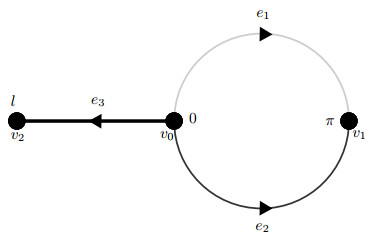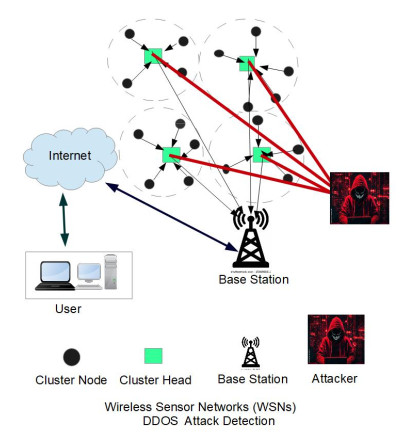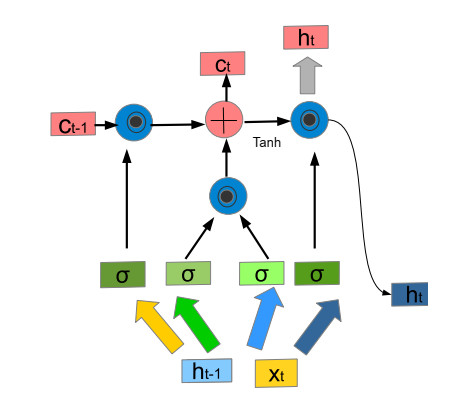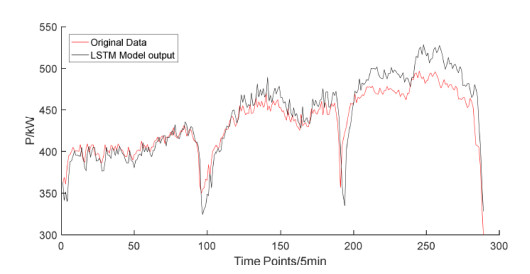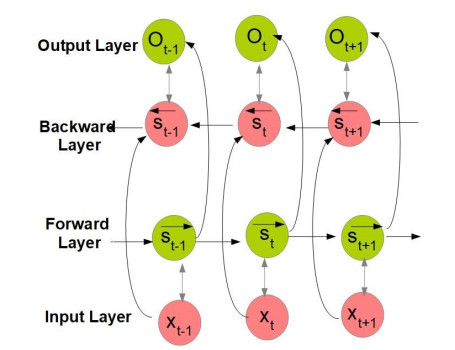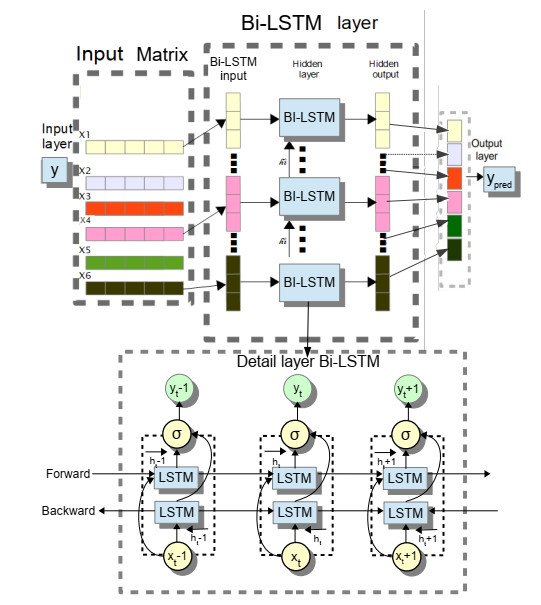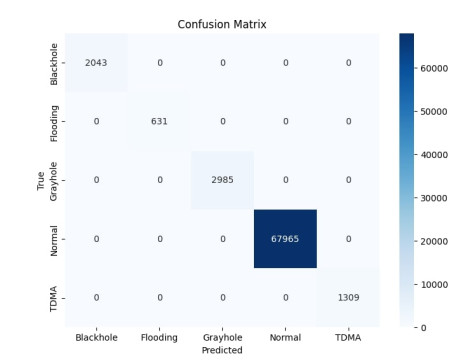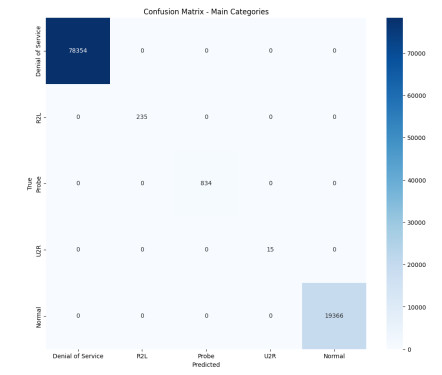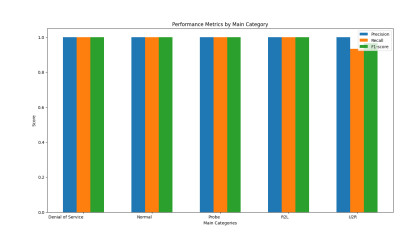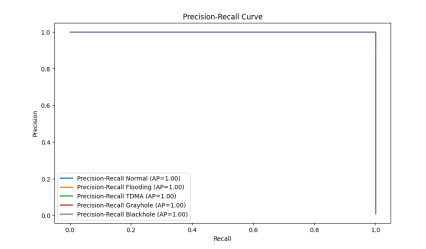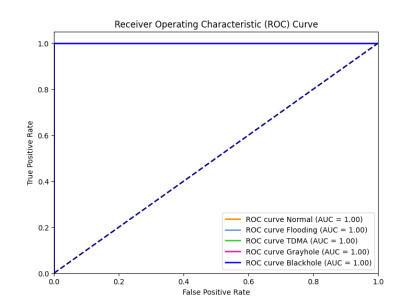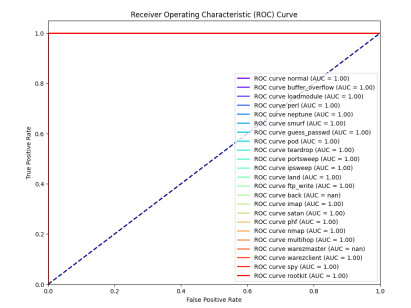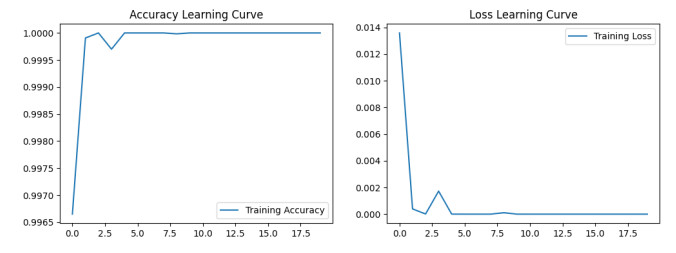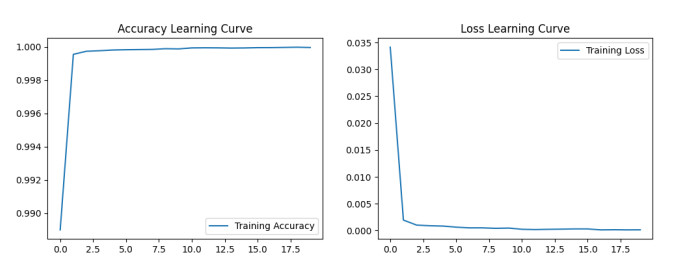1.
Introduction
The study of differential equation on metric graphs dates back to the 1980s with Lumer's work [32], where he investigated the evolution equations on so-called ramification spaces. Later in [46], Nicaise studied the propagation of nerve impulses in dentrites. This early work triggered a substantial amount of research for boundary value problems, in particular, Sturm-Liouville type problems on metric graphs, see the work by von Below [7] and [48]. In [17], Gordeziani et al. considered classical boundary value problems on metric graphs. They established existence and uniqueness of the solution and also presented a numerical approach for solving such type of equations using a double-sweep method. Leugering [31] considered an optimal control problem on a gas network modeled by the nonlinear isothermal Euler gas equations. Using a non-overlapping domain decomposition method, he converted the considered problem on a general graph into local problems on a small part of the graph, in particular into subgraphs considered here. We refer to [30,8,50,52,27,26,11] for more problems and applications of differential equations on metric graphs including flexible structures consisting of strings, beams and plates, quantum graphs as well as textiles and irrigation systems.
On the other hand, fractional calculus has attracted increasing interest in different fields of science and engineering [20,33,47,53,43,28,29] over the years. Unlike the classical derivatives, fractional derivatives are non-local in nature and thus, fractional operators are a very natural tool to model e.g. memory-dependent phenomena used by engineers and physicists. Moreover, in various phenomena, fractional derivatives have proved to be more flexible in the modeling than classical derivatives. We refer to Almeida et al.[3], where the authors considered real life applictions such as population growth model and blood alcohol level problem and proved (based on experimental data) that fractional differential equations model more efficiently certain problems than ordinary differential equations. The fractional operators that are most frequently used in the literature are the Caputo and Riemann-Liouville fractional derivatives and both have the same kernel, namely, k(s,t)=(t−s)n−α−1, n−1<α<n. They have been constructed using a power law (if viewed as convolution) and exhibit a singularity. However, it is not always possible to find power law behaviour in nature. Therefore, in recent years some authors have also defined new fractional operators which have non-singular kernels. The Caputo-Fabrizio fractional derivative [9] which is constructed based on an exponential decay law is an example. Later in 2016, Atangana and Baleanu suggested yet another fractional operator [4] based on the Mittag–Leffler function which is a generalization of the exponential function. The Atangana-Baleanu fractional derivative is again non-local and non-singular.
We may, therefore, classify fractional operators into those with singular and non-singular kernels. Fractional derivatives with singular kernels including Caputo and Riemann-Liouville have been applied in different applications such as the modelling of viscoelastic materials, image processing, control theory etc. On the other hand, fractional derivatives with non-singular kernels (Caputo-Fabrizio and Atangana-Balenau derivatives) have been used e.g in thermal science, material sciences, modelling of the mass-spring-damper system, gas dynamics equation etc. For completeness, we also mention another recently defined fractional operator, namely, the M-fractional derivative and Atangana's conformable derivative. The M-fractional derivative, in turn, has been used to define some physical process such as longitudinal wave equation in a magnetoelectro-elastic circular rod [34,6] and Schrödinger-Hirota equation [36], see also [37,13], while the fractional conformable derivatives have also attracted the researchers in the recent years, see in particular the work of Aguilar et al. [10,39,35,14,38] on the underlying fractional derivatives.
There has been considerable interest in developing the theory of existence of solution for fractional differential equations (FDEs) and it could be considered as one of the most preferable area in the field of FDEs. Various authors have established existence and uniqueness of solution for fractional boundary value problems (FBVPs) on intervals, by applying different fixed point theorems, the variational method, the upper and lower solution method, etc. For detailed analysis, see [1,16,5,58,12] and the references therein. Another emerging area that has recently attracted a lot of attention is the investigation of Ulam-type stability of FDEs. Ulam-type stability, posed by Ulam [55] in 1940, has been of great interest to various researchers since the last two decades. The problem introduced by Ulam was the following: ``Under what conditions does there exists an additive mapping near an approximately additive mapping?'' The problem was solved by Hyers [21] in the subsequent year (1941). Since then, this type of stability has come to be known as Ulam-Hyers stability. Later in 1978, Rassias [51] provided a generalization for the Ulam-Hyers stability of mappings. The mentioned stability analysis has various applications in optimization, physics, biology, etc. where it is difficult to find an analytic solution of the nonlinear problem and it guarantees that there is a close exact solution of the problem. Recently, considerable amount of work has been done on the Ulam-Hyers and Ulam-Hyers-Rassias stability for FBVPs on one-dimensional equations and coupled systems, see in particular [22,23,2,57].
However, in the case of fractional differential equations on metric graphs, not much work has been published until now. It has been initiated by Graef et al. in [18], where the authors established the existence and uniqueness of solution for FBVP on a star graph with only two edges and the fractional derivative was considered in Riemann-Liouville sense. Later in [41], the authors proved the existence and uniqueness of solution for a FBVP on a general star graph (see Figure 1) having k edges and k+1 vertices. In contrast to [18], the authors considered the fractional derivative in the Caputo sense and a more general nonlinear term which depends on the unknown function and its fractional derivative. Recently in [59], Liu and Zhang extended the work of Graef et al. on a general star graph and proved the existence and uniqueness of solution using the Banach contraction principle and Schaefer's fixed point theorem. Moreover, they have also investigated the different kinds of Ulam-type stability for the considered problem. We refer to [42,45,40] for recent articles of FDEs on metric graphs.
As is obvoius from real world applications, significant networks include cyclic subgraphs. At a first glance, it seems, therefore, astounding that the majority of publications dwell on tree-like networks. A closer look at networks containg cycles, however, reveals that a number of difficulties arise when cycles are involved, in particular when questions of control and observation as well as numerical simulations are in the focus. As already mentioned, there are different types of differential equations used to model physical phenomenon on the networks (or metric graphs), namely, isothermal Euler-gas or Saint Venant equations (for gas and water networks, respectively), Kelvin-Voigt-type models (e.g. for electric circuits), hyperbolic wave equations (for the network of strings and Timoshenko beams), differential-difference equations (network of cells) [44]. In many of these applications, fractional derivatives become more and more important in extending constitutive equations for instance, damping mechanisms to more flexible models. To the best knowldege of the authors, no results are available, however, for the corresponding nonlinear fractional boundary value problems on metric graphs containing cycles. Moreover, there are various chemical compounds such as glucose, ethane, cyclohexane that also have the cyclic graphical structure. In particular, quantum graphs, i.e. Schrödinger equations on graphs with cycles, have been considered in [27,26,11]. More recently, Gnutzmann et al. [15] considered nonlinear quantum graphs including cycles, while Klein et al. in [25] used a fractional nonlinear Schrödinger equation and developed numerical tools for it. The model considered in this article can, thus, be seen as a first study to approach stationary fractional quantum graphs including cycles. In order to reduce the complexity of the presentation, we restrict ourselves to the simplest nontrivial nonlinear fractional boundary value problem on a metric graph with a cycle. In particular, we consider the nonlinear FBVP on a circular ring with an attached edge. The circular graph used in this article is, thus, paradigmatic for networks containing cycles. In order to describe the problem, we consider a graph G=(V,E) consisting of a set of nodes V={v0,v1,v2} and a set of edges (or arcs) E={e1=→v0v1,e2=→v0v1,e3=→v0v2} connecting these nodes. Since both the edges e1, e2 are connected to the same nodes v0 and v1, G is a connected graph with multiple edges. However, the graph considered in this paper is a metric graph, therefore each edge of the graph is parametrised by some interval. More precisely, edges e1 and e2 are parametrised by the interval (0,π) and the edge e3 by (0,l) with 0<l<∞. Therefore, edges e1 and e2 form a cycle (circular ring) of length 2π with an attached edge e3 of length l (see Figure 2). Hence, by considering v0 as origin and x∈(0,π) as the coordinate for e1,e2 and z∈(0,l) for e3, we model the nonlinear fractional boundary value problem on the considered metric graph as
Here, CDα0,x denotes the Caputo fractional derivative of order α with respect to x, conditions (3) and (4) are called transmission conditions, namely, continuity and Kirchhoff conditions, respectively at the junction nodes v0 and v1, (5) denotes a Dirichlet condition at the boundary node v2, 1<α≤2 and 0<β≤α−1. The nonlinear functions fi, i=1,2 and f3 are continuous on [0,π]×R×R and [0,l]×R×R, respectively.
As indicated above, this article could be considered as the extension of the above-mentioned results, in particular [41] (with addition to Ulam-type stability results) to metric graphs containing cycles. In contrast to the star graph, where only one junction node v0 is present (see Figure 1), we have two junction nodes (due to cyclic structure), namely, v0 and v1 as shown in Figure 2. Therefore, one has to incorporate the transmission conditions at both nodes v0(x=0) and v1(x=π) given by (3) and (4). These circumstances increase the complexity for the investigation of Ulam-type stability considerably.
To the best knowledge of the authors, no results have been published so far for FBVPs on metric graphs containing cycles. This paper aims to develop the existence and uniqueness of solution and different kinds of Ulam-type stability for the FBVP (1)-(5). For the sake of simplicity and in order to avoid cumbersome notations, in this paper, we consider a particular metric graph. However, the analysis carried out in the present work could be easily extended to general metric graphs containing cycles.
The rest of the paper is organised as follows: In Sec. 2, we recall basic definitions of fractional calculus, introduce lemma (Lemma 2.4) from [41] that transforms the BVP system (1)-(5) to a BVP system on [0,1] and prove another important lemma (Lemma 2.7) which forms the basis of understanding for solving the considered nonlinear problem. In Sec. 3, first, we prove the existence and uniqueness of the solution for FBVP (1)-(5) using Banach contraction principle for Lipschitz-continuous functions fi (defined in Sec. 2) and a certain assumption involving on fractional orders, α,β and Lipschitz constants Li. Then, for bounded and Lipschitz continuous f′is, we apply Krasnoselskii's fixed point theorem to obtain the existence of at least one solution. In Sec. 4, we establish applicable results under which the solution of the considered FBVP (1)-(5) satisfies the conditions of Ulam's stability. The established results in sections 3 and 4 are illustrated by an example in Sec. 5.
2.
Preliminaries
In this section, we first provide basic definitions of fractional calculus and then give some known results which will be used throughout this paper.
Definition 2.1. The fractional integral of order α>0 for a continuous function f on [a,b] is defined as
where Γ(.) is the Euler gamma function.
Definition 2.2. The Riemann-Liouville fractional derivative of order α>0 for a function f on [a,b] is defined as
where the function f(t) has absolutely continuous derivatives up to order (n−1), n−1≤α<n, n∈N.
Definition 2.3. The Caputo fractional derivative of order α>0 for a function f on [a,b] is defined as
where n−1<α≤n, n∈N.
Remark 1. If f∈Cn[a,b], then the Caputo fractional derivative of order α>0 is given by
where n is same as defined in equation (8).
Now, we give the following lemma (for the proof see [41]) which results in converting the fractional BVP (1)-(5) to a BVP system on [0,1].
Lemma 2.4. Let u be a function defined on [0,d] such that CDα0,xu exists on [0,d] with α>0. Let x∈[0,d], t=x/d∈[0,1] and y(t)=u(dt). Then
In view of the above lemma, BVP (1)-(5) can be transformed into a BVP system on [0,1] given by
where yi(t)=ui(πt), fi(t,x,y)=fi(πt,x,y), i=1,2, y3(t)=u3(lt) and f3(t,z,y)=f3(lt,z,y).
Lemma 2.5. (see [24]) Let α>0, then the solution of the fractional differential equation CDα0,ty(t)=0 is given by
where ci∈R, i=1,2,…,n and n is the smallest integer greater than or equal to α.
From Lemma 2.5, it follows that
for some ci∈R, i=1,2,…,n.
Theorem 2.6. [56] Let A be a square matrix of order n having positive real entries, i.e. A∈Mnn(R+). Then, the following statements are equivalent:
(i) The eigenvalues of matrix A, denoted by λ, are in the open unit disc, i.e. |λ|<1.
(ii) The matrix (I−A) is nonsingular and (I−A)−1 has nonnegative elements. Moreover
Now, we prove the following lemma which solves the linear fractional boundary value problem on the considered metric graph and plays an important role in order to establish the main results of the paper.
Lemma 2.7. Let σi∈C[0,1], then the solution of the fractional differential equations
together with the transmission conditions (12)-(13) and the boundary condition (14) is given by
and
Proof. In view of (15), we have
where c(j)i, i=1,2,3, j=1,2, are some constants. The continuity conditions (12) gives
Moreover
Now, the Kirchoff condition (13) implies that c(2)i, i=1,2,3, must satisfy
Finally, the Dirichlet boundary condition (14) gives,
After solving (20)-(22), we get
and
On substituting the values of c(j)i, i=1,2,3, j=1,2 in (19), we obtain (17)-(18).
Remark 2. Using the Definition 2.3 of the Caputo derivative and by direct computations, it can be easily shown that if (yi)1≤i≤3 are given by (17) and (18), then (yi)1≤i≤3 also satisfy (16) along with transmission conditions (12)-(13) and boundary condition (14).
3.
Existence and uniqueness results
In this section, Banach's contraction principle and Krasnoselskii's fixed point theorem will be used to establish the existence of solution of BVP (10)-(14). For 1<α≤2, 0<β≤α−1, we define the space X={y:y∈C([0,1]),CDβ0,ty∈C([0,1])} equipped with the norm
Then, (X,‖.‖X) is a Banach space (see [54]) and, consequently, the product space (X3=X×X×X,‖.‖X3) is a Banach space with norm
In view of Lemma 2.7, we define the operator T:X3→X3, associated with the BVP (10)-(14), by
where
and
Remark 3. In view of Remark 2, it is clear that the BVP (10)-(14) has a solution if and only if T has a fixed point in X3.
For computational convenience, we set the following quantities:
In the following theorem, we prove the existence and uniqueness of solution of the BVP (10)-(14) using Banach's contraction principle.
Theorem 3.1. Let fi:[0,1]×R×R→R, i=1,2,3 be continuous functions satisfying the conditions
then the BVP (10)-(14) has a unique solution on [0,1] if Rα,β(∑3i=1Li)<1, where Rα,β is given by equation (25).
Proof. We prove the result by showing that T is a contraction mapping. To this end, let y=(y1,y2,y3), w=(w1,w2,w3)∈X3 and t∈[0,1]. Then, using equation (23), we have
Now, from (27) and using t≤1, we obtain
i,j=1,2andi≠j. Hence, taking the supremum over t∈[0,1] in above inequality, we obtain,
Following a similar analysis as above, one gets from (24)
Therefore, we get
On the other hand, by using the relation [49]
and the fact that the Caputo derivative of a constant function is zero, we get
Again, by using (27) and t1−β≤1 (as1−β≥0), we obtain
Hence, we get
Similarly, one gets
Hence,
Finally, using (28)-(32), we get
Thus,
Since Rα,β(3∑i=1Li)<1, it follows that T is a contraction map and, thus, in view of Banach's contraction principle, BVP (10)-(14) has a unique solution on [0,1]. Therefore, BVP (1)-(5) has a unique solution.
Now, we prove the existence of solutions of BVP (10)-(14) using Krasnoselskii's fixed point theorem. First, we state the following result due to Krasnoselskii [19].
Lemma 3.2. Let Ω be a bounded closed convex subset of a Banach space X. Let A, B be mappings of Ω in to X such that (i)Ay+Bw∈Ω for every y,w∈Ω; (ii)A is completely continuous; (iii)B is a contraction mapping. Then there exists z∈Ω such that the equation Az+Bz=z has a solution in Ω.
Theorem 3.3. Let fi:[0,1]×R×R→R, i=1,2,3 be continuous functions satisfying the condition (27) and suppose there exists Mi>0 such that
then BVP (10)-(14) has at least one solution on [0,1] if Pα,β(∑3i=1Li)<1, where Pα,β is defined by equation (26).
Proof. Let Ω={y=(y1,y2,y3)∈X3:||y||≤r}, where r is chosen such that
then Ω is a bounded and closed convex subset of the Banach space X3. We define the operators A and B on Ω as
where
and here,
Now using (33), for any y∈Ω, we find that
Thus,
Moreover, using (30), we get
Hence
Therefore, using (35) and (36), we obtain
Again using (33), for any w∈Ω, one gets
Hence
On the other hand
Thus, for i=1,2,3, we get
Finally, using (38) and (39), we obtain
Hence, (37) and (40) gives
Therefore, Ay+Bw∈Ω.
Also, using similar analysis as in the proof of Theorem 3.1, it follows from (27) that B is a contraction map for
The continuity of the functions fi, i=1,2,3, implies that operator A is continuous. Moreover, in view of (37), we deduce that A is uniformly bounded on Ω.
Next, we prove that the operator A is equicontinuous. For y=(y1,y2,y3)∈Ω, t1,t2∈[0,1] with t1<t2, we have
where we have used (33). Similarly,
Therefore,
Moreover, we have
and
Hence
Thus, from (41) and (42), we get
Hence, we deduce that the operators Ai, i=1,2,3 are equicontinuous, which implies that A is equicontinuous and by the Arzela-Ascoli theorem, it follows that A is completely continuous operator. Therefore, all the conditions of Lemma 3.2 are satisfied and consequently, we conclude that BVP (10)-(14) has at least one solution on [0,1]. Therefore, BVP (1)-(5) has at least one solution.
4.
Ulam Stability analysis
In this section, we investigate a different kind of Ulam-type stability analysis for BVP system (10)-(14). Let ϵi>0, fi:[0,1]×R×R→R, i=1,2,3 be continuous functions and ϑi(t):[0,1]→R+, i=1,2,3 are nondecreasing continuous functions. Consider the following inequalities:
where a1=a2=π and a3=l.
Definition 4.1. The BVP system (10)-(14) is said to be Ulam-Hyers stable, if there exists a constant C=C(α,β)>0 such that for each ϵ=ϵ(ϵ1,ϵ2,ϵ3)>0 and for each solution w=(wi)1≤i≤3∈X3 of the inequalities (43), there exists a solution y=(yi)1≤i≤3∈X3 of (10)-(14) with
Moreover, if there exists a function Ψ∈C(R+,R+) with Ψ(0)=0 such that
then BVP system (10)-(14) is called generalized Ulam-Hyers stable.
Definition 4.2. The BVP system (10)-(14) is said to be Ulam-Hyers-Rassias stable with respect to ϑ=(ϑ1,ϑ2,ϑ3)∈C([0,1],R+), if there exists a constant Cϑ>0 such that for each ϵ=ϵ(ϵ1,ϵ2,ϵ3)>0 and for each solution w=(wi)1≤i≤3∈X3 of the inequalities (44), there exists a solution y=(yi)1≤i≤3∈X3 of (10)-(14) with
Definition 4.3. The BVP system (10)-(14) is said to be generalized Ulam-Hyers-Rassias stable with respect to ϑ=(ϑ1,ϑ2,ϑ3)∈C([0,1],R+), if there exists a constant Cϑ>0 such that for each ϵ=ϵ(ϵ1,ϵ2,ϵ3)>0 and for each solution w=(wi)1≤i≤3∈X3 of the inequalities (45), there exists a solution y=(yi)1≤i≤3∈X3 of (10)-(14) with
Remark 4. A function w=(w1,w2,w3)∈X3 is said to be the solution of (43), if there exist functions ϕi∈C([0,1],R), i=1,2,3, which depends on wi, i=1,2,3, respectively, such that
(i) |ϕi(t)|≤ϵi,t∈[0,1],i=1,2,3;
(ii) CDα0,twi(t)=aαifi(t,wi(t),a−βiCDβ0,twi(t))+ϕi(t),t∈[0,1],i=1,2,3,
where a1=a2=π and a3=l.
Remark 5. A function w=(w1,w2,w3)∈X3 is said to be the solution of (44), if there exist functions ϕi∈C([0,1],R), i=1,2,3, which depends on wi, i=1,2,3, respectively, such that
(i) |ϕi(t)|≤ϑi(t)ϵi,t∈[0,1],i=1,2,3;
(ii) CDα0,twi(t)=aαifi(t,wi(t),a−βiCDβ0,twi(t))+ϕi(t),t∈[0,1],i=1,2,3,
where a1=a2=π and a3=l.
Lemma 4.4. Let w=(wi)1≤i≤3∈X3 be the solution of the inequalities (43). Then, the following inequalities hold:
and
where
and here,
Proof. Since (wi)1≤i≤3 are the solution of the inequalties (43), then by Remark 4, wi will be the solution of following BVP:
In view of Lemma 2.7, the solution of BVP system (47) is given by
From (48), we find that
Similarly, using (49), we get
On the other hand, applying the operator CDβ0,t on (48) and then using (30), we get
Now
Moreover, from (49), we have
Therefore, the proof is completed.
Lemma 4.5. Let w=(wi)1≤i≤3∈X3 be the solution of the inequalities (44). Then, the following inequalities hold:
and
Proof. The proof can be obtained using a similar analysis as in Lemma 4.4 and the fact that ϑi, i=1,2,3 are nondecreasing functions. Therefore, the proof is omitted.
Now, we prove the Ulam-Hyers stability of the BVP system (10)-(14). Again, for convenience, we set the following quantities:
and
Theorem 4.6. Suppose that (27) holds and Rα,β(∑3i=1Li)<1, then the unique solution of BVP system (10)-(14) is Ulam-Hyers stable and consequently generalized Ulam-Hyers stable if the eigenvalues of matrix A, denoted by λ, are in the open unit disc, i.e., |λ|<1, where
and Rα,β is given by (25).
Proof. Let w=(wi)1≤i≤3 be the solution of the inequalities (43) and y=(yi)1≤i≤3 be the solution to the following BVP system:
Then, in view of Lemma 2.7 and Theorem 3.1, system (50) has a unique solution that can be written as
where gi(s), i=1,2,3 are given by (34). Now, using Lemma 4.4, for t∈[0,1], we get
where
Hence, by (27), we get
Further, we have
Therefore, from (51) and (52), we obtain
Using similar analysis, one also obtains
Now, inequalities (53) and (54) together can be rewritten in the matrix form as follows:
Using the fact that eigenvalues of A are in the open unit disc together with Theorem 2.6, we get
Further, if we set
and ϵ=max(ϵ1,ϵ2,ϵ3), then we obtain from (55) that
Since bij≥0 for 1≤i,j≤3, we have C>0. Therefore, we deduce that BVP system (10)-(14) is Ulam-Hyers stable.
Finally, taking Ψ(ϵ)=Cϵ in (56), we have Ψ(0)=0 and thus, by Definition 4.1, we conclude that BVP system (10)-(14) is generalized Ulam-Hyers stable.
Theorem 4.7. Let ϑi(t)∈C([0,1],R+), i=1,2,3 be nondecreasing functions. Suppose that (27) holds and Rα,β(∑3i=1Li)<1, then the unique solution of BVP system (10)-(14) is Ulam-Hyers-Rassias stable and consequently generalized Ulam-Hyers-Rassias stable with respect to ϑ=(ϑ1,ϑ2,ϑ3) if the eigenvalues of matrix A, denoted by λ, are in the open unit disc, i.e., |λ|<1, where A is same as defined in Theorem 4.6 and function ϑ is defined by
Proof. Let w=(wi)1≤i≤3 be the solution of the inequalities (44) and y=(yi)1≤i≤3 be the solution to the BVP system (10)-(14). Now, using Lemma 4.5 and following the similar analysis as in the proof of Theorem 4.6, we have
and
Hence, from (57) and (58), we get
Similarly, one can obtain
Now, rewriting the inequalities (59)-(60) toghether in the matrix form as
Using the fact that eigenvalues of A are in the open unit disc together with Theorem 2.6, we obtain
Further, we define
It is straightforward to see that
and
Now, by taking ϵ=max(ϵ1,ϵ2,ϵ3), we get
where
and
Finally, we assume
and thus, by Definition 4.2, we conclude that the BVP system (10)-(14) is Ulam-Hyers-Rassias stable with respect to ϑ.
Moreover, taking ϵ=1 in (61), we conclude using Definition 4.3 that the BVP system (10)-(14) is generalized Ulam-Hyers-Rassias stable with respect to ϑ.
5.
Example
Consider the BVP (1)-(5) with α=3/2, β=3/4, l=1/4 and
Using Lemma 2.4, we get the following equivalent system
subject to the transmission conditions (12)-(13) and the boundary condition (14) with 0<t<1. For t∈[0,1] and x,z,x1,z1∈R, it is clear that
and
Therefore, we have L1=181, L2=1256, L3=1320 and
Now, using numerical values Γ(1/4)≈3.625, Γ(3/4)≈1.2254, we get Rα,β≈49.5476 and consequently
Therefore, by Theorem 3.1, the BVP system (63) has a unique solution on [0,1].
Further, using the given values, we have
The eigenvalues of matrix A are given by
Hence, we conclude from Theorem 4.6 that BVP system (63) is Ulam-Hyers stable, and consequently generalized Ulam-Hyers stable. Moreover, using Theorem 4.7, one can easily deduce that BVP system (63) is Ulam-Hyers-Rassias stable and generalized Ulam-Hyers-Rassias stable.
Acknowledgments
The authors acknowledge the support of this work by the Indo-German exchange program "Multiscale Modelling, Simulation and optimization for energy, Advanced Materials and Manufacturing" funded by UGC (India) and DAAD (Germany) (grant number 1-3/2016 (IC)).
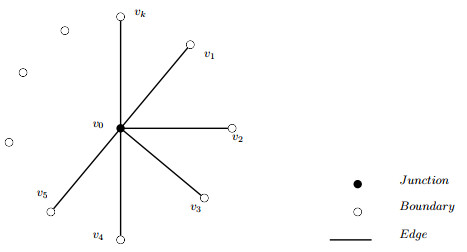









 DownLoad:
DownLoad:
